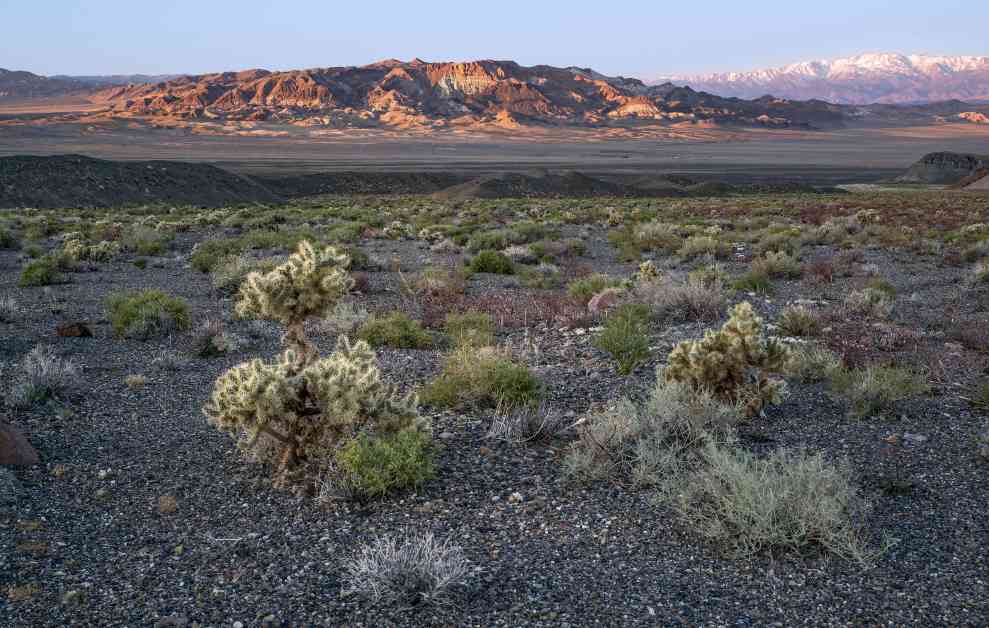Environmentalists and some residents in Nevada’s smallest county, Esmeralda, are voicing their concerns over the proposed Esmeralda 7 solar project. The project, if approved, could threaten the wide-open spaces and central Nevada culture that the county is known for. With fewer than 750 residents spread out over vast expanses of rugged mountains and basins, Esmeralda County prides itself on its rural and isolated lifestyle. However, this way of life is now being challenged by solar developers seeking to construct a massive project that would cover nearly 185 square miles of land, making it potentially North America’s largest solar project.
Opposition to the Esmeralda 7 project stems from its proposed location 30 miles west of Tonopah, right in the heart of Esmeralda County. The area is celebrated by conservation groups like Friends of Nevada Wilderness for its proximity to the pristine Monte Cristo Wilderness and its untouched natural beauty, which was once considered for a state park. Residents fear that the installation of a large-scale solar project in this area would drastically alter the landscape and disrupt their rural way of life.
Former Esmeralda County commissioner, Nancy Boland, expressed concerns about the financial impact of the project on the county. While residents support solar development in principle, they want new projects to contribute financially to the local community. Boland highlighted the potential lack of financial compensation for the county if the project qualifies for state solar tax abatements, leaving residents feeling shortchanged.
Joyce Hartman, another longtime resident of Esmeralda County, emphasized the scale of the proposed project, comparing it to the vast expanses of farmland she is familiar with. The sheer size of the project, with a nameplate capacity of 6,200 megawatts, raises concerns about its impact on the county’s customs and culture. Hartman worries that the project will encroach on their way of life and jeopardize the unique character of the county.
### Challenges and Concerns
The Bureau of Land Management (BLM) has identified “solar energy zones” across the West, designating areas suitable for solar development. The Biden administration’s push for renewable energy has led to a surge in solar projects on federally owned lands, including those in Nevada. Esmeralda County, with its vast federal land holdings, has become a prime target for solar developers looking to capitalize on the state’s renewable energy potential.
The proposed Esmeralda 7 project is not located within designated solar energy zones but is positioned to take advantage of NV Energy’s Greenlink West transmission line, connecting Las Vegas to Reno. While proponents argue that the transmission line is necessary for grid resilience, opponents fear that it will spur further solar development in Nevada’s pristine wilderness areas. The cumulative impact of multiple solar projects in the region raises concerns about changes to the visual landscape, quality of life, and environmental degradation.
The outdated resource management plans of the BLM pose a significant challenge to regulating solar development in Nevada. With most plans drafted over 20 years ago, they fail to account for the rapid growth of the solar industry and its impact on public lands. The Tonopah Resource Management Plan, which includes the Esmeralda area, dates back to 1997, leaving regulators struggling to adapt to the changing landscape of renewable energy development.
### Financial Implications and Community Concerns
Esmeralda County’s limited private land and heavy reliance on federally owned land pose challenges for economic growth and revenue generation. The county receives payments in lieu of taxes from the federal government to offset property tax losses on nontaxable federal land. However, the diminishing payments over the years have strained the county’s finances, making it difficult to fund essential services and infrastructure projects.
Residents are wary of the potential impact of partial solar tax abatements offered by the state, which could further reduce revenue for the county. The lack of financial compensation from solar developers coupled with limited input on project siting decisions has left residents feeling marginalized and frustrated. The influx of temporary workers and the industrial footprint of large-scale solar projects threaten to alter the character of the county and erode the sense of freedom and rural charm that residents cherish.
The approval of the Esmeralda 7 project would pave the way for additional solar and energy storage projects in the county, further straining the capacity of local officials to oversee and manage the rapid influx of development. With multiple projects in various stages of proposal, the county’s limited staff and resources are stretched thin, raising concerns about the long-term impact on the community and environment.
### Advocacy and Pushback
Environmental advocacy groups like Friends of Nevada Wilderness are actively opposing the Esmeralda 7 project and other solar developments in the region. Concerned about the loss of wilderness characteristics and the encroachment of industrial development on pristine landscapes, these groups are calling for greater transparency and community engagement in decision-making processes.
The proposed Greenlink transmission line, which forms a crucial link for the Esmeralda 7 project, has also come under scrutiny for its potential environmental impacts. Conservationists argue that the rush to develop renewable energy projects should not come at the expense of sensitive ecosystems and cultural heritage sites. By filing formal protests and advocating for responsible renewable energy development, these groups hope to raise awareness and mobilize support for sustainable energy practices.
As the debate over the Esmeralda 7 project continues to unfold, residents of Esmeralda County are grappling with the profound changes that large-scale solar development could bring to their community. Balancing the need for renewable energy with the preservation of natural landscapes and rural lifestyles presents a complex challenge for policymakers, developers, and residents alike. Finding common ground and fostering dialogue between stakeholders will be essential in shaping the future of renewable energy development in Nevada’s smallest county.



